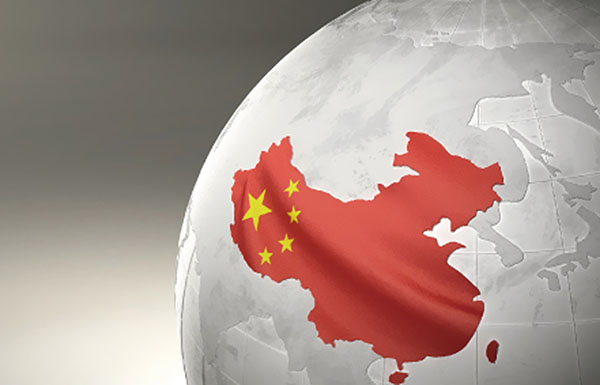The following are excerpts of the remarks by C.H. Tung, former Chief Executive of Hong Kong SAR and Chairman of China-United States Exchange Foundation at a luncheon in New York hosted by the AmericaChina Public Affairs Institute on Jan 25.
What is China pursuing internationally? What is China’s long-term strategic intent? For China to realize its vision, it needs, not just for now but in the long term, to pursue peace with its neighbors and with countries around the world.

Having lost a third of its land mass due to foreign aggression towards the end of the Qing Dynasty, the China of today will strongly protect its territorial integrity. Nevertheless, China is pursuing this objective through peaceful means.
There are people in the United States who believe that, as China grows in strength, it will take over America’s global leadership position. But, look at several facts. First, the United States has the most enviable position geographically, with only two countries, Canada and Mexico, as its neighbors, and separated from the rest of the world by the Pacific Ocean, the Atlantic Ocean, and the Caribbean Sea. The United States also holds an unassailable position in science, technology and innovation, with some of the best universities in the world. It is also a country to which the best and brightest want to migrate, blessed with natural resources that others can only envy.
By contrast, China has 14 neighbors, more than any other country on Earth, some of which it has had a troubled history. China has more than 20% of the population of the world, but only 7% of the world’s arable land, and it is poor in other natural resources. With a population of over 1.3 billion people, the burden of achieving a reasonable degree of wealth for all the people of the country is really a huge challenge. Therefore, although blessed with other advantages, the Chinese leadership knows the country has to constantly keep running forward in order not to slip-up. Indeed, China’s modern-day success has not come easily.
It is true, because of its huge population, that China’s total economy, in terms of GDP, will one day surpass that of the United States, but its GDP per capita will still be a fraction of that of the United States. In 10 years, assuming current growth rates, the two countries’ GDPs may come close to each other. But because of the difference in the size of their populations, the US GDP per capita will still be four times greater than China’s per capita GDP.
Yet, in spite of China’s enormous disadvantages, there will always be people thinking that China will one day want to lead the world. This perspective is erroneous.
The truth is that China has no ambition to lead the world. China’s domestic needs are so enormous, and her challenges are so difficult, that this is where China’s focus must be.
Even when China joins the developed world in 2049, as it is hoped, it will have no aspirations or incentives to colonize or conquer foreign lands. Indeed, the Chinese people remember the pain and suffering of being occupied. Nor does it uphold any religious or ideological motives to influence other people or to take over foreign lands. In the height of the Ming Dynasty, when China had 30% of the GDP of the world, China remained peaceful and did not make incursions into foreign lands.
There is also the view that China will want to rewrite global rules. However, the fact is that modern-day China is a beneficiary of today’s global governance. What China would like, like so many other developing nations, is to have a larger voice, to ensure the needs of the developing world can be met. The Asian Infrastructure Investment Bank (AIIB) is a case in point. Asia’s infrastructure development needs cannot be met by the World Bank or the Asian Development Bank.
The fact is also that, globally, we live in a very complex world that is facing many challenges. These challenges need to be handled by all the countries working together. China certainly, as it moves up the economic ladder, will want to be a force for good for the world. From this point of view, it is important for China to maintain a stable and constructive relationship with the United States. If the U.S. and China can work together on global issues, many challenges can be overcome.
Let us take a look at some of these global challenges, and what the United States and China can and are doing together to address these challenges.
The first that comes to mind is the climate change conference in Paris last December. This was a huge success only because of the efforts of the two working together. Second is cooperation on global hot-spots, such as the Iranian nuclear deal, and China’s active participation in Afghanistan’s nation-building effort. Third is the need to intensify collaboration by the two countries to bring about peace and de-nuclearization on the Korean Peninsula. Fourth is to fight global terrorism in a determined manner.
As we enter 2016, the global economy is at best sputtering along, and many talk about an imminent global recession. America has the largest economy in the world, and China has the second largest. If the two countries work together in a coordinated fashion with other leading economies, we can add vigor into the global economy.
China’s “One Belt, One Road” initiative is designed to boost the economies of the nations in Southeast Asia, South Asia, Central Asia, the Middle East and parts of Eastern Europe. China believes that infrastructure building in these areas will lay the foundation for economic growth, and can become a new driver of the world economy. Collaboration in infrastructure building in Africa will not only help the economy, but also improve livelihoods and reduce the flow of refugees. US-China collaboration in these areas will be very important.
If the U.S. and China fail to cooperate, the chances of overcoming the challenges will be much more difficult. If the two countries confront each other, collaboration becomes impossible. This is why eight presidents of the United States, from Nixon up to Obama, and five leaders of China, from Chairman Mao to President Xi Jinping, have steadfastly promoted better relations between the two countries. They obviously have known that this is important to the world.
China and the U.S. are working together, and they need to do more. The fact is, there is still too much mistrust. There is also too much misunderstanding. After all, the two countries have different histories and different cultures; they are at different stages of development, therefore their needs are different. As a result, differences do occur between the two countries. Fortunately, these differences have so far been managed.
But this is not adequate. The two countries need to intensify their efforts to build trust and promote understanding. The best way to achieve that is to expand exchanges at all levels of society. The two presidents now meet three or four times every year. The strategic and economic dialogue teams from both countries meet twice every year. On an official level, there is a great deal of interaction.
But the communication between the Senate and House of the U.S. side and the National People’s Congress on the Chinese side can be much better. People-to-people exchanges need to be further expanded. It is heartening to note that there are 300,000 students from China studying in the United States. Meanwhile, the US is making a major effort to increase the number of US students studying in China. 2016 is US-China Tourism Year, which is an effort by the leaders of both countries to expand tourism between the two countries. Greater efforts between the two countries in other forms of exchanges need to be made, such as between think tanks, universities and the press, as well as through cultural interchange, trade, commerce and investment activities. These will all help, and lead to greater understanding and trust.
Just remember the relationship of the two countries today began with a ping-pong game in 1970. If China and the U.S. can do all the above, over time there is no limit to how close the two countries can get to, and how much benefit the people of the two countries can receive. Indeed, there will be no limit to the common good the two can do together around the world.
